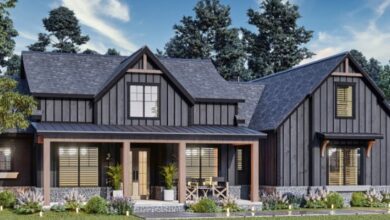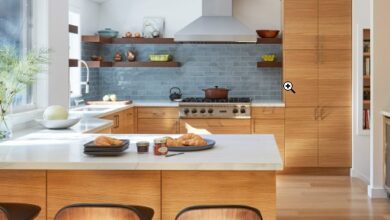Effortless Elegance: Minimalist Home Styling Ideas for a Clutter-Free Space
Effortless Elegance: Minimalist Home Styling Ideas for a Clutter-Free Space – In today’s fast-paced world, the need for a serene and organized living environment has never been more important. Minimalism is more than just a design trend—it’s a lifestyle choice that promotes a clutter-free space, mental clarity, and a focus on quality over quantity. In this comprehensive guide, we’ll explore minimalist home styling ideas that bring effortless elegance into your life while creating a harmonious space that feels both modern and inviting.
Understanding Minimalism in Home Design
Minimalism is rooted in the idea that less is more. It’s a philosophy that encourages homeowners to eliminate excess and focus on what truly matters. By stripping away non-essential elements, minimalist design emphasizes clean lines, open spaces, and a calm, uncluttered atmosphere.
The Core Principles of Minimalist Design
- Simplicity: Minimalism thrives on simplicity. Every element in your home should have a purpose and contribute to a sense of order.
- Functionality: Furniture and decor items are selected not just for their beauty but for their practical use. Each piece should serve a dual function if possible.
- Quality Over Quantity: Investing in high-quality, timeless pieces ensures durability and sustained aesthetic appeal.
- Neutral Palettes: Soft, neutral colors dominate minimalist spaces, creating a tranquil backdrop that allows your decor to shine.
- Open Spaces: A minimalist home features open, flowing spaces that create a sense of freedom and clarity.
The Benefits of a Minimalist Home
Adopting a minimalist home design can transform not only your space but also your overall well-being. Here are some benefits that you can expect when you embrace minimalist styling:
1. Enhanced Mental Clarity
A cluttered environment often leads to a cluttered mind. By eliminating unnecessary items, you create a space that fosters peace and mental clarity, allowing you to focus on what truly matters in your daily life.
2. Easier Maintenance
A minimalist home is easier to clean and maintain. Fewer belongings mean less dusting, organizing, and cleaning, freeing up time for you to enjoy your space rather than constantly tending to it.
3. Increased Functionality
With an emphasis on functionality, every piece in your home is chosen for a reason. This approach results in a space that is not only beautiful but also highly practical, ensuring that your home works for you.
4. Timeless Aesthetic
Minimalist design is timeless. Trends come and go, but a minimalist space with clean lines, quality materials, and neutral tones remains stylish and relevant for years to come.
Key Elements of Minimalist Home Styling
To achieve an effortlessly elegant minimalist home, consider incorporating the following key elements:
Clean Lines and Open Spaces
One of the hallmarks of minimalist design is the use of clean lines. This means opting for furniture with straight edges and simple silhouettes. Open floor plans also play a crucial role, as they allow light to flow freely and create a sense of spaciousness.
Neutral Color Palette
Neutral colors such as white, beige, gray, and soft pastels form the foundation of a minimalist space. These colors evoke calm and simplicity, making the space feel larger and more serene. Consider using an accent wall or a few well-chosen accessories in bold hues to add visual interest without overwhelming the space.
Natural Materials and Textures
Incorporating natural materials such as wood, stone, and metal adds warmth and texture to a minimalist home. These elements bring a touch of nature indoors, enhancing the overall ambiance. For example, a wooden coffee table or a stone accent can provide a focal point while maintaining the minimalistic aesthetic.
Thoughtful Storage Solutions
Clutter is the antithesis of minimalism. To maintain a clean and organized home, invest in smart storage solutions. Built-in cabinets, hidden storage compartments, and multi-functional furniture can help you keep your belongings neatly tucked away.
Lighting and Ambience
Lighting is a powerful tool in minimalist design. Natural light should be maximized by using large windows and avoiding heavy drapery. Complement natural light with modern light fixtures that feature simple, elegant designs. Consider installing dimmers to adjust the ambience according to your mood.
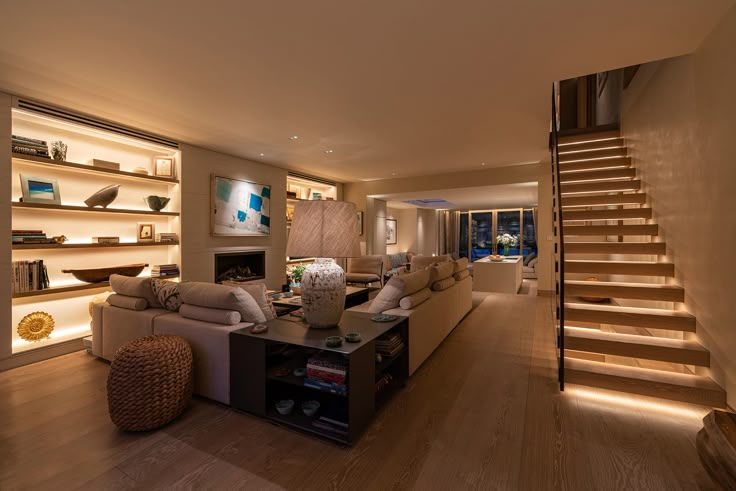
Decluttering: The First Step to a Minimalist Home
Before you can implement minimalist styling ideas, it’s essential to declutter your space. A clutter-free environment forms the basis of minimalist design and paves the way for a more organized, stress-free home.
Tips for Effective Decluttering
- Start Small: Begin with one room or even one section of a room. Focusing on a small area makes the task feel less overwhelming.
- Sort by Categories: Divide your items into categories such as keep, donate, or toss. Be honest about what you truly need and use.
- Adopt the “One In, One Out” Rule: To prevent future clutter, consider implementing a rule where every new item introduced into your home replaces an existing item.
- Digitize When Possible: Convert physical items like documents, photos, and even books into digital formats to save space.
- Set Aside Time Regularly: Make decluttering a regular part of your routine. Even 15 minutes a day can prevent clutter from accumulating.
Maintaining a Clutter-Free Space
Once you’ve decluttered your home, it’s important to maintain that order. Regularly assess your belongings, and ask yourself if each item adds value to your life. A minimalist home is not about depriving yourself but about curating a space that supports your lifestyle and goals.
Creating a Cohesive Minimalist Color Scheme
Color plays a vital role in minimalist home design. The right palette can transform your space, making it feel larger, cleaner, and more inviting.
Neutral Tones with a Pop of Color
The base of a minimalist color scheme is usually neutral. Whites, grays, and beiges create a soft background that exudes simplicity. However, minimalism doesn’t have to be boring. Introduce pops of color sparingly—perhaps through a single accent piece, a piece of art, or a few decorative cushions. This approach keeps the overall look calm while adding personality.
Monochromatic and Analogous Schemes
For a more unified look, consider a monochromatic or analogous color scheme. Monochromatic schemes use varying shades of one color, creating depth without overwhelming contrast. Analogous schemes, which use colors next to each other on the color wheel, provide a harmonious yet varied palette that maintains the minimalist ethos.
The Role of Textures
In a minimalist home, texture becomes essential in adding depth and interest. Combine smooth surfaces like polished concrete or glass with tactile materials such as woven fabrics or matte ceramics. These subtle differences in texture prevent a minimalist space from feeling too sterile.
Furniture and Accessories: The Heart of Minimalist Style
In a minimalist home, every piece of furniture and every accessory must earn its place. The focus is on quality, functionality, and design simplicity.
Investing in Quality Pieces
When selecting furniture, think long-term. High-quality, timeless pieces not only look better but are also more durable. Choose items with clean lines and neutral tones. For example, a well-crafted wooden dining table paired with modern chairs can serve as the centerpiece of your minimalist living space.
Multi-Functional Furniture
Multi-functional furniture is a hallmark of minimalist design. Pieces like storage ottomans, sofa beds, and extendable dining tables maximize space while reducing the need for multiple items. This approach is particularly beneficial in smaller homes where every square foot counts.
Minimalist Accessories
Accessories in a minimalist home should be chosen with care. Rather than overwhelming a room with numerous decor items, select a few meaningful pieces that enhance the overall aesthetic. Think of a striking piece of art, a sculptural vase, or a set of elegant cushions. Remember, in minimalism, less truly is more.
The Importance of Negative Space
Negative space—the empty space around and between objects—is just as important as the objects themselves. It creates a sense of balance and calm, allowing each item to breathe and be appreciated individually. When arranging furniture and accessories, be mindful of the space around them.
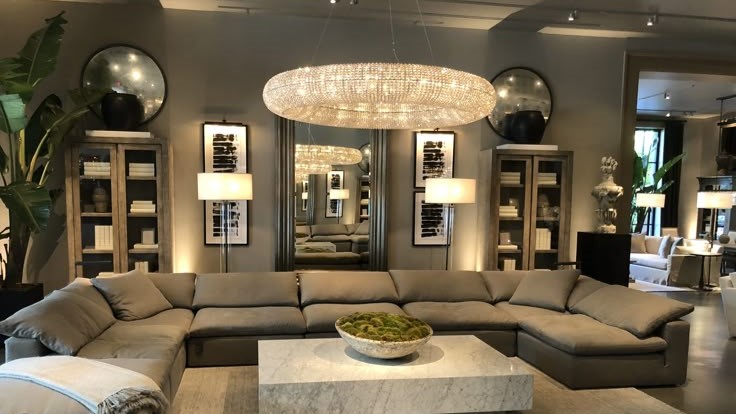
Lighting: Setting the Mood with Minimalist Elegance
Lighting is not just about functionality—it sets the mood and highlights the beauty of your minimalist design. Effective lighting strategies can transform a space, making it feel warm, inviting, and thoughtfully curated.
Maximizing Natural Light
Natural light is a cornerstone of minimalist design. Large, unobstructed windows, skylights, and glass doors allow sunlight to flood your home, creating an airy and uplifting atmosphere. Avoid heavy curtains and instead opt for simple, sheer window treatments that soften the light without blocking it.
Modern Light Fixtures
When choosing artificial lighting, select modern fixtures with clean lines and simple forms. Pendant lights, track lighting, and recessed lighting can provide both ambient and task lighting without detracting from the minimalist aesthetic. Look for fixtures in matte finishes or neutral colors to maintain a cohesive look.
Layered Lighting for Ambience
Layering different types of lighting can create a dynamic and inviting space. Combine ambient lighting (overall illumination) with task lighting (focused on work areas) and accent lighting (highlighting specific features or decor) to achieve a balanced and versatile lighting design.
Incorporating Nature: Bringing the Outdoors In
Minimalism and nature go hand in hand. Integrating natural elements into your home not only enhances the aesthetic but also contributes to a healthier, more sustainable living environment.
Indoor Plants and Greenery
Plants are a natural way to add life and color to a minimalist home. Choose low-maintenance plants that thrive indoors, such as succulents, snake plants, or fiddle leaf figs. A few well-placed planters can add a touch of nature without cluttering the space.
Natural Materials in Decor
Extend the outdoor theme by incorporating natural materials like wood, stone, and bamboo into your decor. A reclaimed wood coffee table, a stone accent wall, or bamboo blinds can create a seamless connection between indoor and outdoor environments.
Sustainable and Eco-Friendly Choices
A minimalist lifestyle often aligns with sustainable living. When shopping for furniture and decor, prioritize eco-friendly brands and materials that are both durable and responsibly sourced. This not only benefits the environment but also contributes to the overall purity and longevity of your minimalist space.
Maximizing Space with Smart Layouts
A clutter-free space is as much about what you remove as what you include. Smart layout planning can make even the smallest home feel expansive and welcoming.
Open Floor Plans
Open floor plans are a staple of minimalist design. By removing unnecessary walls and barriers, you create a fluid, interconnected space that encourages movement and conversation. Open layouts also allow for better distribution of natural light, making rooms appear larger.
Zoning Your Home
Even in open spaces, it’s important to define areas for different activities. Use rugs, lighting, or furniture arrangements to create distinct zones for living, dining, or working without resorting to heavy partitions. This helps maintain a sense of order while ensuring every area has a clear purpose.
Multi-Use Areas
In a minimalist home, every room should be designed for flexibility. A living room can double as a workspace, or a dining area might serve as a casual gathering spot. Embracing multi-use areas not only saves space but also reinforces the minimalist idea that every item and space should serve a practical purpose.
Minimalist Storage Solutions: Keeping Clutter at Bay
An organized home relies heavily on effective storage solutions. The key is to store items out of sight and only display what’s necessary.
Built-In Cabinets and Shelves
Custom built-in cabinets and shelves are an excellent way to maintain a sleek and integrated look. They can be designed to blend with your walls, offering ample storage without interrupting the clean lines of your space.
Hidden Storage Options
Consider furniture that offers hidden storage, such as beds with drawers, coffee tables with compartments, and benches with concealed space. These solutions allow you to keep your belongings organized and out of sight, ensuring that your minimalist aesthetic remains undisturbed.
Regular Decluttering Habits
Even with the best storage solutions, regular decluttering is essential. Set aside time each month to assess your belongings, remove items that are no longer needed, and reorganize your storage areas. This proactive approach helps maintain a clutter-free environment over the long term.
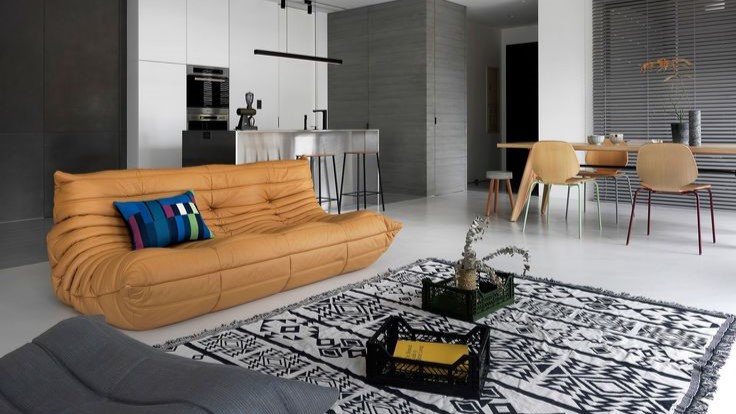
Personalizing Your Minimalist Space
While minimalism emphasizes simplicity, it doesn’t mean your home has to be devoid of personality. The trick is to introduce personal touches in a way that complements the overall design without overwhelming it.
Curate a Few Statement Pieces
Select a few high-quality, statement pieces that reflect your personality and style. This could be a piece of art that inspires you, a vintage clock with a story, or a handcrafted piece of furniture. These elements add character and warmth to your minimalist home while preserving the overall sense of calm.
Displaying Memories Thoughtfully
Family photos, travel souvenirs, or heirlooms can be incorporated into a minimalist decor if displayed thoughtfully. Instead of scattering these mementos around, consider creating a dedicated, well-curated gallery wall or a minimalist shelf that showcases your cherished items.
Balancing Functionality with Aesthetics
The key to personalizing your space is balance. Ensure that every decorative element has a purpose and adds to the overall functionality of the room. This will help you avoid the trap of accumulating too many items that can disrupt the minimalist balance.
Minimalist Home Office Ideas
With the rise of remote work, designing a minimalist home office has become more important than ever. A clutter-free workspace can boost productivity and reduce stress.
Essential Desk Setup
Invest in a simple, well-designed desk that meets your work needs without taking up too much space. Pair it with an ergonomic chair and minimal office accessories. A clean desk layout not only enhances productivity but also reflects the minimalist ethos.
Organized Storage for Office Supplies
Keep office supplies neatly stored away in minimalist filing cabinets or desk organizers. Use labels and designated spaces for everything, so your workspace remains tidy and focused.
Technology Integration
Incorporate technology seamlessly into your home office. Use wireless devices, cable management systems, and multi-functional tech gadgets to reduce visual clutter. A minimalist approach to technology ensures that your office remains efficient and visually appealing.
Minimalist Living Rooms: The Centerpiece of Your Home
The living room is often the heart of the home, where relaxation and social interactions take place. A minimalist living room can serve as a tranquil retreat from the bustle of everyday life.
Choosing the Right Sofa and Seating
Select a sofa with clean lines and a neutral fabric that complements your minimalist theme. Consider modular seating options that can be rearranged to suit different occasions. Minimalist coffee tables and side tables should have simple designs and hidden storage features to maintain a clutter-free look.
Art and Decor with Purpose
A few well-chosen art pieces or sculptures can enhance the aesthetic of your living room without overwhelming it. Opt for artworks that evoke calm and inspiration. The goal is to add personality while keeping the overall environment peaceful and uncluttered.
Creating a Focal Point
Even in a minimalist living room, a focal point can anchor the design. This could be a striking piece of furniture, a modern fireplace, or an accent wall with textured finishes. Ensure that the focal point does not dominate the space but rather enhances the overall simplicity of the room.
Kitchen and Dining: Minimalism in Everyday Living
The kitchen is another area where minimalist design can significantly improve functionality and ease of use. A minimalist kitchen focuses on clean surfaces, efficient storage, and streamlined appliances.
Sleek Cabinets and Countertops
Choose cabinetry with a flat-panel design in neutral colors to create a seamless look. Countertops in materials like quartz or concrete add durability and a modern touch. The kitchen should be a place of order and efficiency, where every tool has its designated place.
Streamlined Appliances
Modern, built-in appliances not only save space but also contribute to the minimalist aesthetic. Select appliances with a simple design that blend into the cabinetry. The result is a kitchen that feels spacious and free from unnecessary clutter.
Dining Area with Minimalist Flair
In the dining area, opt for a table and chairs that prioritize simplicity and comfort. A minimalist dining set with a clean design can serve as the perfect backdrop for family meals or intimate gatherings. Keep decor minimal—perhaps a simple centerpiece or a small vase with fresh flowers—to maintain the elegant atmosphere.
Outdoor Minimalist Living
A minimalist aesthetic doesn’t have to be confined indoors. Extending your design philosophy to outdoor spaces can create a seamless transition between your home and nature.
Simple Landscaping Ideas
Opt for a clean, uncluttered garden design. Use geometric shapes and minimal plant varieties to create a landscape that feels both modern and serene. Hardscaping elements like stone pathways or concrete planters can enhance the minimalist look.
Outdoor Furniture
Invest in quality outdoor furniture with simple lines and neutral colors. A minimalist patio or balcony can serve as a relaxing extension of your living space. Keep accessories to a minimum—a few weather-resistant cushions or a subtle outdoor rug can add comfort without compromising the design.
Harmonious Indoor-Outdoor Flow
Large sliding or folding glass doors can help merge your indoor living space with your outdoor area. This continuity not only enhances natural light but also reinforces the minimalist principle of open, flowing spaces.
The Role of Minimalism in Stress Reduction and Well-Being
A minimalist home is more than just a pretty space—it has a profound impact on mental and emotional well-being. The simplicity of minimalist design reduces sensory overload and creates an environment conducive to relaxation and mindfulness.
Reduced Visual Clutter
A home free from excessive decor and clutter allows your mind to rest and focus on what’s truly important. This reduction in visual noise can lead to decreased stress levels and a greater sense of calm.
Intentional Living
Minimalism encourages intentional living—making conscious choices about what to keep in your space and what to let go. This practice can extend into other areas of your life, fostering a mindset that prioritizes quality experiences and meaningful relationships.
Creating a Sanctuary
Your home should be a sanctuary from the chaos of the outside world. A minimalist space, with its emphasis on simplicity and balance, provides a refuge where you can recharge and find solace in the everyday.
Bringing It All Together: Steps to Transform Your Home
Transitioning to a minimalist home design is a journey that involves careful planning, thoughtful decision-making, and a willingness to let go of the superfluous. Here’s a step-by-step guide to help you get started:
- Evaluate Your Space: Walk through your home and identify areas that feel cluttered or chaotic.
- Declutter Systematically: Begin with one room at a time. Sort your belongings into keep, donate, or discard piles.
- Define Your Style: Research minimalist design inspirations and decide on a color palette, furniture style, and overall aesthetic that resonates with you.
- Invest in Quality: Replace cluttered or outdated pieces with quality items that have a clean design and serve a clear purpose.
- Enhance Natural Light: Maximize your space’s potential by allowing natural light to flow in through large windows and minimal window treatments.
- Incorporate Smart Storage: Use built-in cabinetry, hidden storage, and multi-functional furniture to keep your space organized.
- Personalize Thoughtfully: Add personal touches that reflect your personality without overwhelming your design.
- Maintain Regularly: Make decluttering and reorganization a regular habit to preserve the minimalist aesthetic over time.
Conclusion
Embracing minimalism in your home is a transformative process that goes beyond simple decor—it’s about creating a lifestyle that values clarity, functionality, and calm. By focusing on quality over quantity, choosing a neutral palette, and incorporating smart design elements, you can create a space that exudes effortless elegance and remains clutter-free.
The minimalist home styling ideas outlined in this article provide a roadmap for anyone seeking to transform their living environment into a serene and organized sanctuary. Whether you’re starting with a full-scale renovation or making incremental changes, remember that minimalism is a journey toward a more intentional and stress-free life.
By embracing these principles, you not only create a space that is aesthetically pleasing but also one that nurtures mental well-being and enhances everyday living. With a focus on simplicity, functionality, and sustainability, your minimalist home will become a testament to the art of living well with less.


